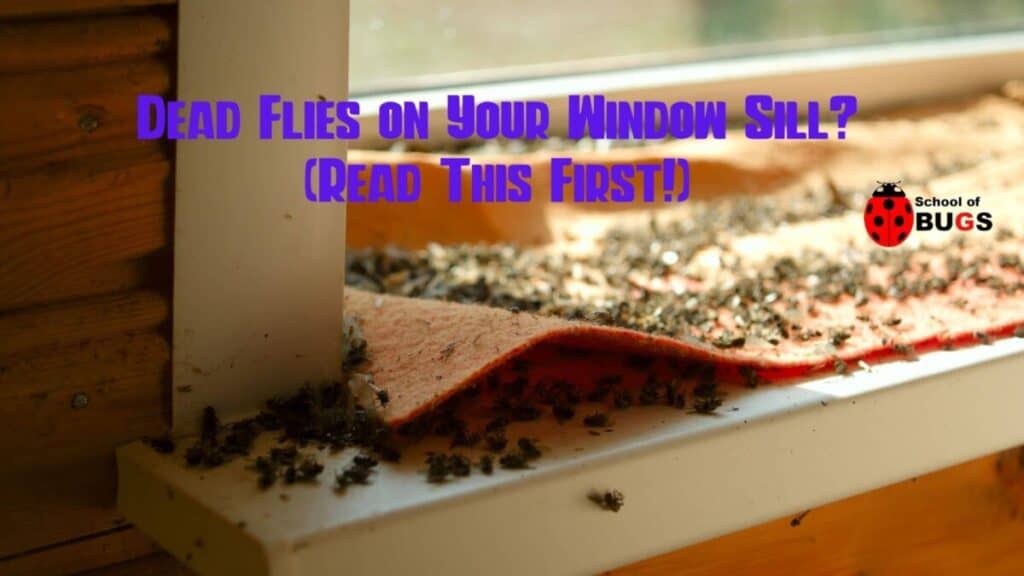
Dead flies accumulate on your window sill because they run out of energy attempting to get out of your house and eventually die.
They’re attracted to light and see the window – whether opened or closed – as a way to escape the indoors.
That’s why, if you have a fly problem, you’ll often find dead flies on your window sill. Dead flies near a window can be a nuisance, so there are some things you should know if you find them:
- Flies are attracted to light and get stuck at your windows and in screens, causing them to die there
- Flies are often disoriented by windows because windows block UVB light, confusing their visual signals
- The most common type of fly found dead in windowsills is the adult cluster fly
- For the most part, dead flies are harmless to your health
- But there are appropriate ways to clean them off your windowsill and out of window tracks
- Dead flies could be a sign of infestation, but are rarely a sign of poor hygiene in the home
In this article, we’ll explore the basics of the Cluster fly, how to prevent them from getting into your home and dying, and how to clean them up if you do find dead flies on your window sill.
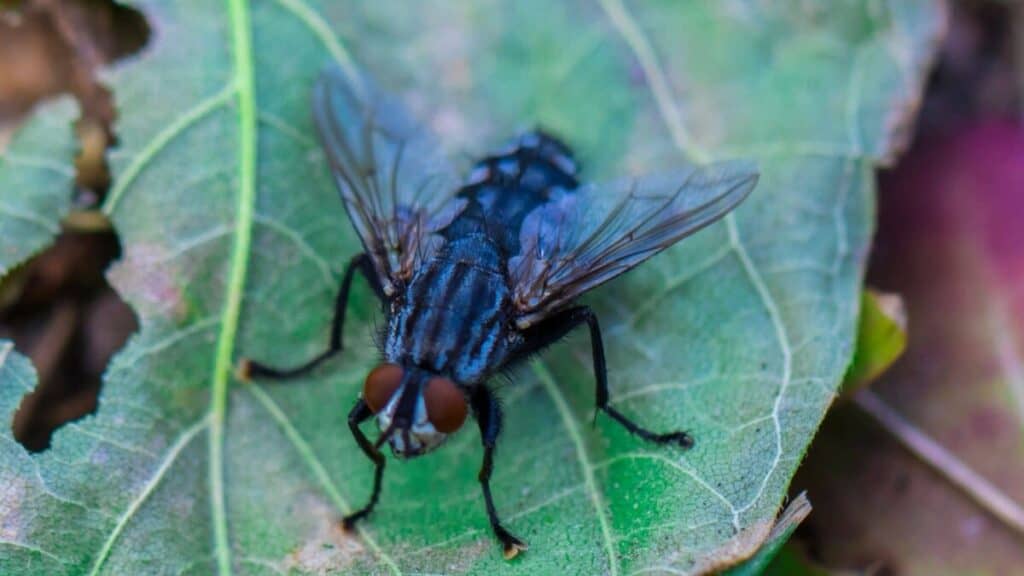
Why are there dead flies on my window sill?
Dead flies see your windows as a way to escape the indoors because they’re attracted to light.
Fortunately for you but unfortunately for the fly, windows allow UVA light to penetrate the glass but block out harmful UVB rays. This confuses insects’ visual signals.
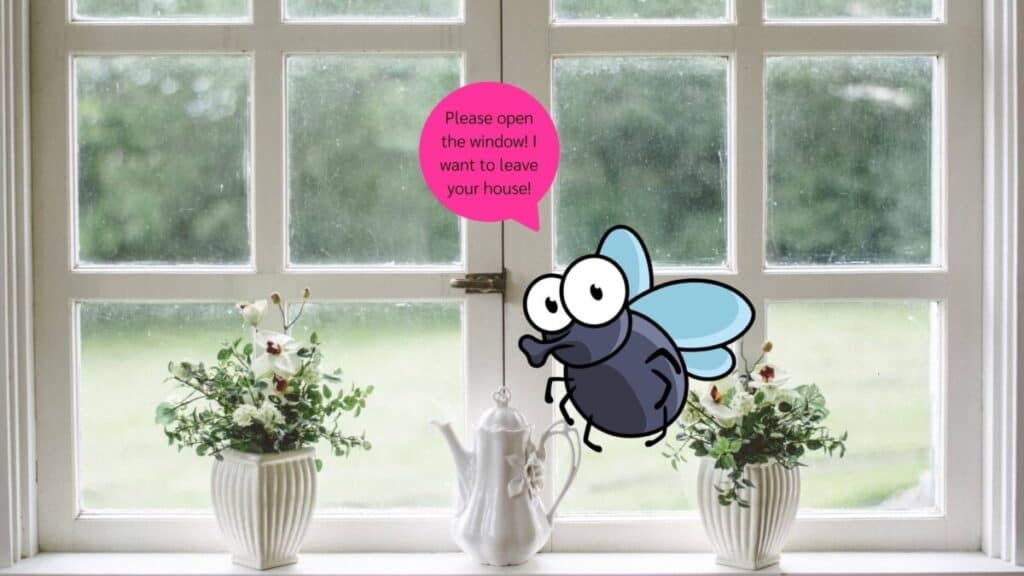
Flies will continue to fly at a window to escape, often getting stuck in the screen or behind it, with no way to get out.
Eventually, flies use up the entirety of their body fat storage on energy as they attempt to escape. They die from exhaustion, right there on your window sill.
What kind of flies are dying in my window sill?
The most common fly found dead in a window sill is the everyday Adult Cluster Fly. However, you may find a variety of interesting insects dead in your window tracks, not all of them harmless. Take care when removing them.
The Adult Cluster Fly is around 1/3 of an inch long. This typical fly has clear wings with a veined pattern throughout.
Its overall coloring appears grey due to its black body with a silver checkered pattern. It has small golden hairs around its thorax.
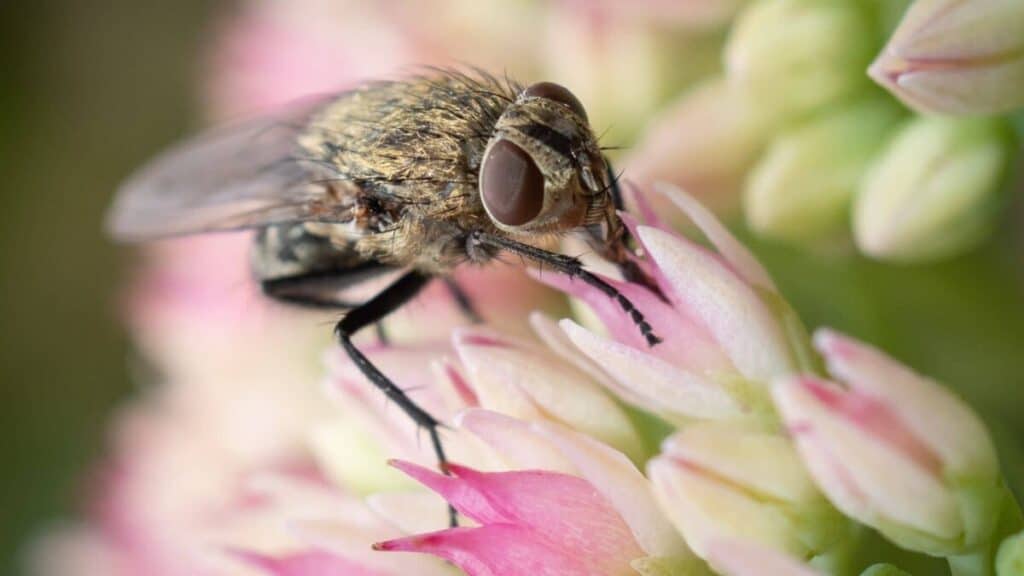
Usually, if there’s one Cluster Fly, there are many, hence the name. However, it’s not uncommon to also find the common house fly in your window sill.
House flies are smaller than cluster flies and are more likely looking for food and water when they enter your house.
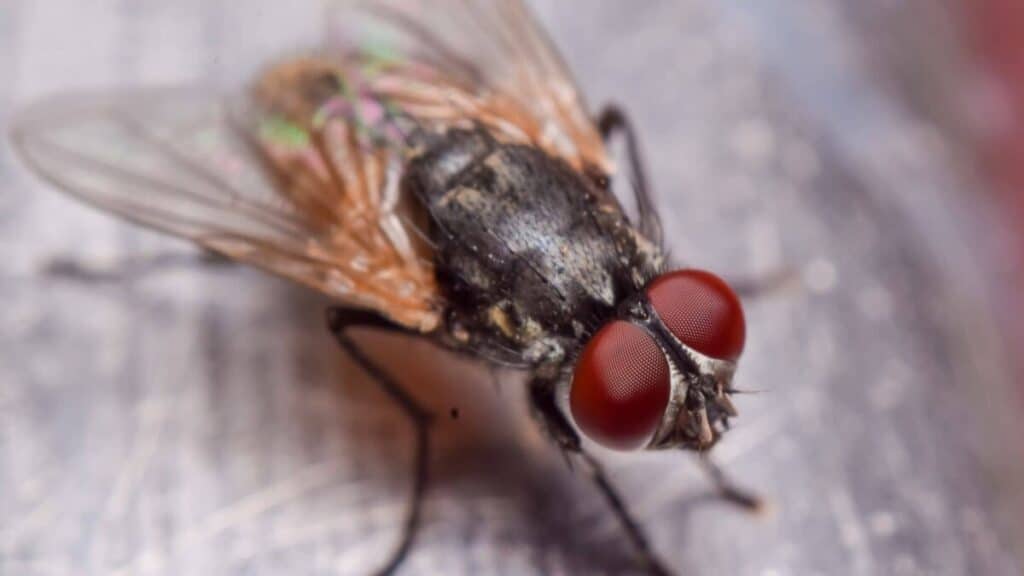
Cluster flies, on the other hand, are looking for warmth. That’s why you’ll usually see them begin to appear in spring months, after they’ve spent the fall and winter hibernating in your home.
Will dead flies on my window sill make me sick?
Do they do any harm?
Cluster flies are annoying, but they rarely make anyone sick. They’re mostly harmless to human health and will not likely cause any damage to your home, other than the occasional feces left behind on walls, and their dead fly bodies in your window sills.
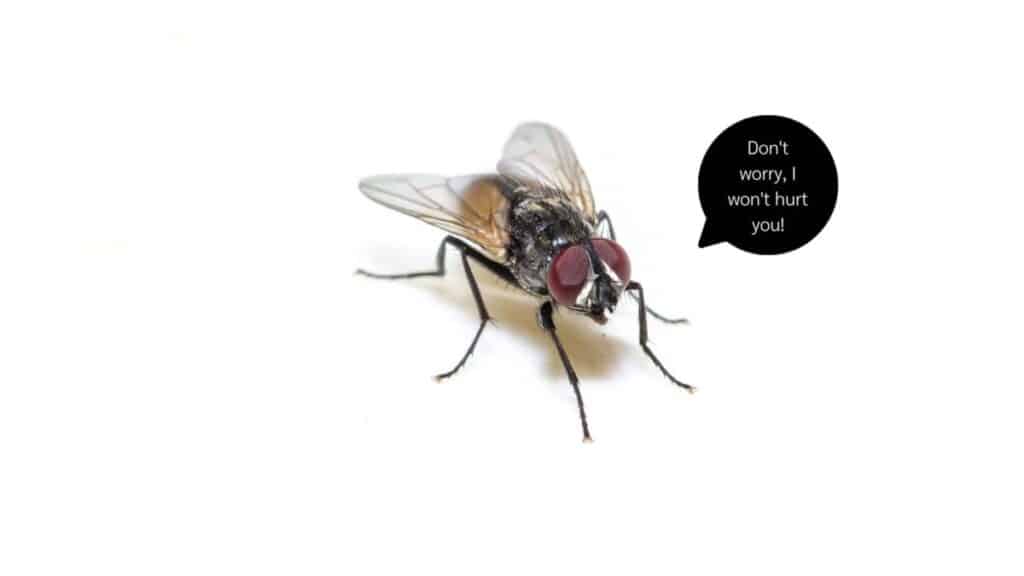
However, Cluster flies are not the only type of insect that you will find dead on your window sill. Some insects feed on animal feces and carcasses and therefore carry diseases that can cause you illness.
For this reason, understand the difference between a cluster fly and other flies and insects in your home.
What do dead flies on my window sill mean?
Dead flies on your window sill could mean that you have a cluster fly infestation somewhere in your house or building.
Dead flies in your window sill rarely mean that you have poor hygiene, especially if they’re cluster flies.
If you see multiple dead flies of the same kind in your window sill or window tracks, there are likely more where those came from.
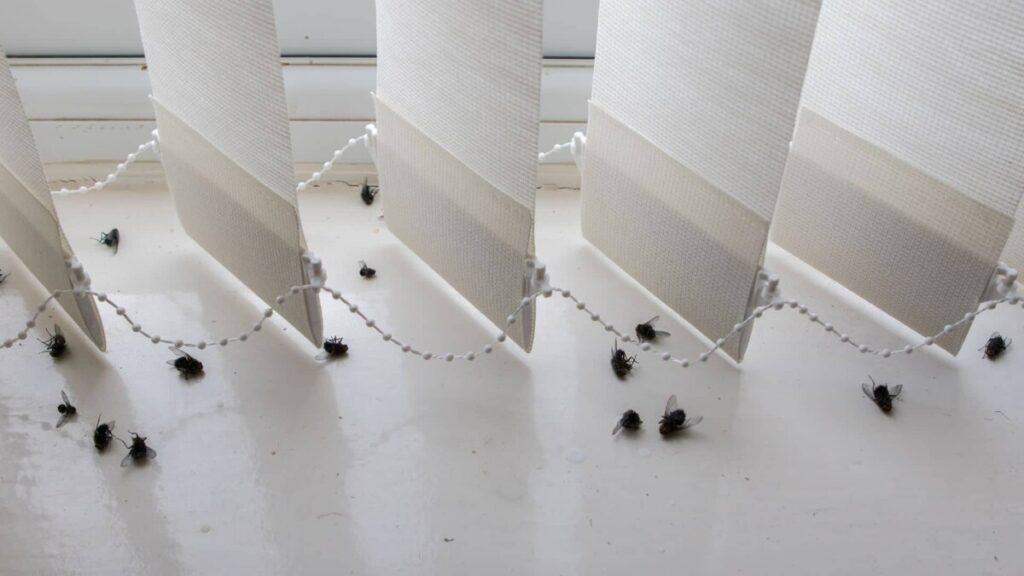
Cluster flies target specific residences year after year, so you may find this to be an annual problem.
Dead flies that do not cluster flies, or other insects, commonly mean nothing more than an insect somehow got into your house and wanted out but was unable to escape.
How do I get rid of dead flies on my window sill?
https://askinglot.com/why-are-there-dead-flies-on-my-window-sill
Even pest exterminators agree that it is very difficult to prevent a Cluster Fly infestation. Cluster Flies typically pick one residence on a block for no apparent reason other than there’s a warm space to hibernate.
Once they’ve picked your house, you could see them year after year.
However, you can take some measures to prevent your home from allowing the flies inside in the first place.
Look for any entry points, like cracks in walls or floorboards, holes in screens, and damaged weather stripping. Fix these areas by covering the openings. Window caulking works well in tight spaces.
If you’ve found other types of insects in your window sills, some experts recommend sprinkling salt near the window to repel pests like slugs, snails, and ants.

If you suspect you’re experiencing a Cluster Fly infestation right now, and it’s become a big enough nuisance to you and your family, an exterminator can help with treatments that will kill off the current cluster.
But there’s no guarantee the Cluster Flies will find your house again next fall or winter.
How can I clean up dead flies on my window sill?
The best way to clean up dead flies from your window sill or window, according to CleaningTips.net, is to start by using a vacuum cleaner with a small crevice tool or an attachment that can help you reach small spaces.
Your vacuum cleaner will pick up the bugs and any dust or dirt also in those crevices, and safely store the germs in a vacuum bag for quick and clean removal.
Once you’re finished vacuuming, you’ll want to grab a spray bottle with all-purpose cleaner and a microfiber cloth.
Microfiber helps pick up any insect parts that may be left behind, rather than just move them around.
As for cleaner, you can use a simple dish soap diluted with water (just make sure to fully wash the area with water afterward so you don’t leave streaks), or even household vinegar.

Vinegar is inexpensive and doesn’t contain harsh chemicals. It also won’t leave streaks on your glass, as dish soap might.
Wipe the window sill with a dry cloth first to remove anything the vacuum didn’t pick up. Mix up your cleaning solution, and spritz it on a new clean cloth, not directly on the window sill or track itself.
Often, windows have wood frames, and if you saturate a wood frame, it could warp.
Wipe the sill and track gently to scrub away any leftover fly feces or parts. Then dry the sills with a new, clean microfiber cloth.
It’s unnecessary to use a strong disinfectant cleaner unless you suspect that you’re not only cleaning up after Cluster Flies.
If you see other insects, it’s best to play it safe and use a disinfectant to clean the surface, as these insects could be carrying disease that can make you sick.
Is there a fly infestation in my house?
If you see multiple dead flies in your window sill, and they keep reappearing over the course of a week, you probably have a fly infestation.
Don’t panic and remember that this infestation has little to do with the personal hygiene of your space.
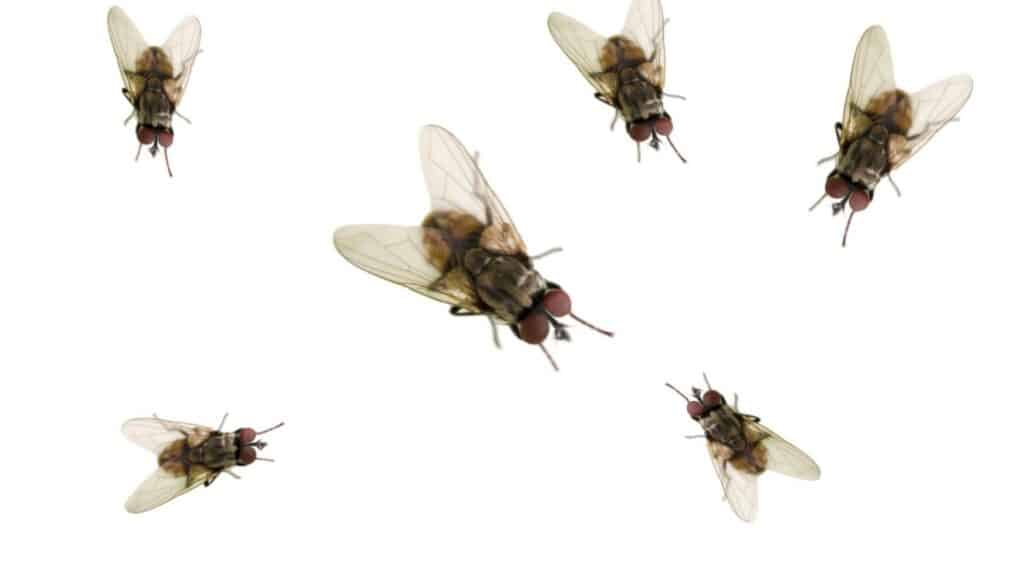
To understand if there’s a fly infestation in your house, look for these additional signs, according to Waltham Pest Services:
- Cluster flies cannot survive cold weather, so you may begin seeing them inside your house in the colder months of the year.
- On a sunny day, you may spot cluster flies gathering in warmer areas of your home, or near windows and doors.
- If the swarm of flies is big enough, you may be able to hear it moving in attic or crawl spaces.
- You may spot multiple flies trying to exit your house once it starts to get warm outside again, as they’re attempting to go lay their maggot eggs in the soil outside.
Cluster flies travel in large groups, so if you spot a few, there will be many more hiding out somewhere in your house.
Conclusion
In conclusion, dead flies on your window sill could mean several things: you could have a fly infestation; you may have openings in your home that are allowing insects to get inside, or you may have common house flies on your hands that simply want to get at water and food left out inside your house.
Flies die inside your window sill, screen, or track because they run out of energy trying to get back outside where they belong, and they use light to determine where they can escape.
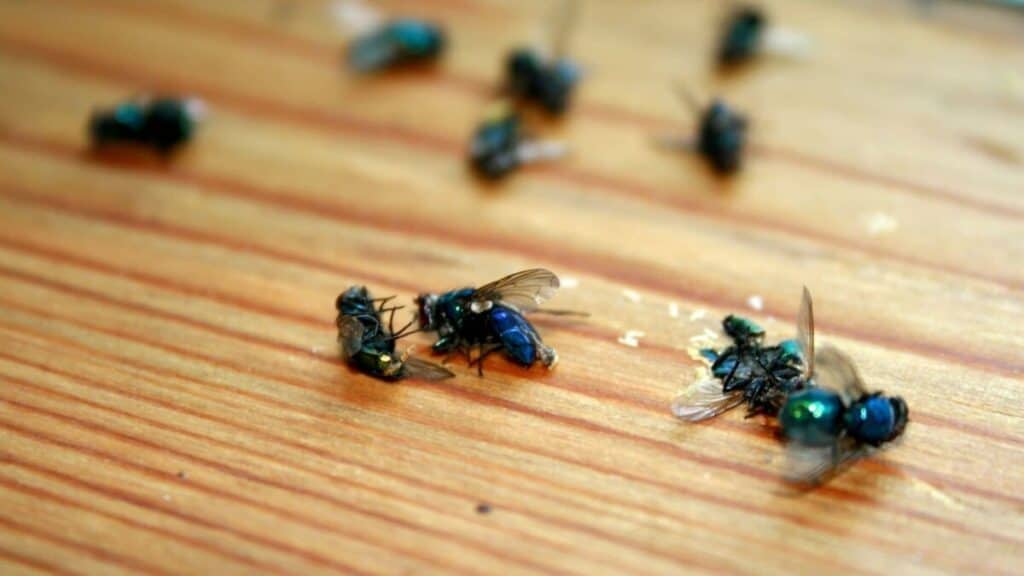
Dead flies rarely cause for alarm, and Cluster Flies should not cause any sickness or damage to your house.
However, some insects do carry disease, so recognize the difference between Cluster Flies and other flies before you attempt to handle fly carcasses.
Cleaning up after flies that die in your window sill can be annoying, but it’s a fairly simple process with a vacuum, a couple clean clothes, and a gentle cleaning solution.
No matter what you do, though, if you have Cluster Flies in your home, you may be dealing with this same problem again next year.
Alright, that’s it for this article, here are a few hand-selected articles that you might also find interesting reads:
Why Do Dead Flies Attract More Flies?Why Do Bugs Fly at You? The Surprising Answer!
Why Do Flies and Other Insects Hit Windows – ANSWERED!
Recent Posts
Tiny Black Bugs in Bathroom NO WINGS: What They Are and What to Do!
Finding tiny black bugs in your bathroom can be uncomfortable, to say the least. Especially if they are persistent, or they appear in very large numbers, which they often like to do. When it...
Tiny Black Bugs in Plant Soil - What Are They & What To Do About It
A short horror story: You get a new houseplant. You do your best to take care of it. You’ve ensured that it has the right soil, the right amount of sun, it gets enough water. And then one day, you...

